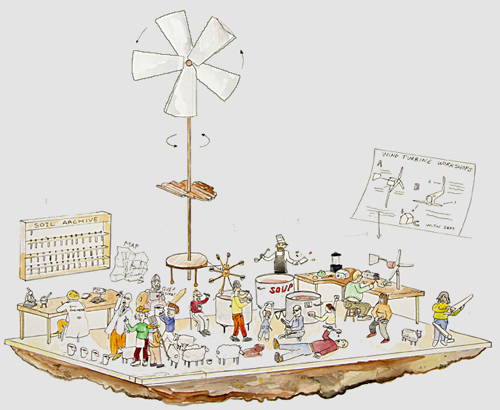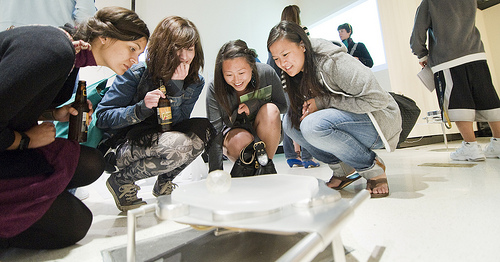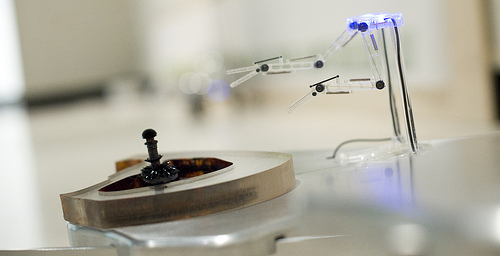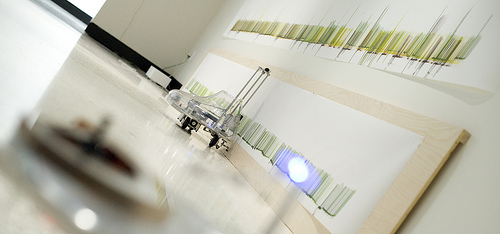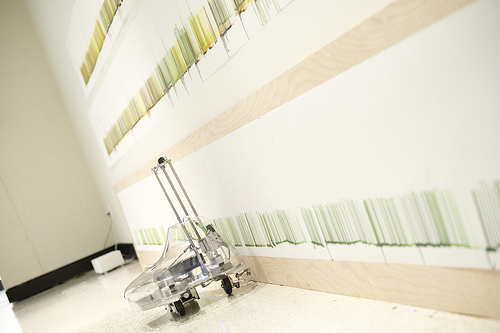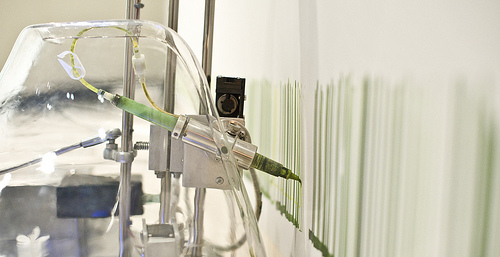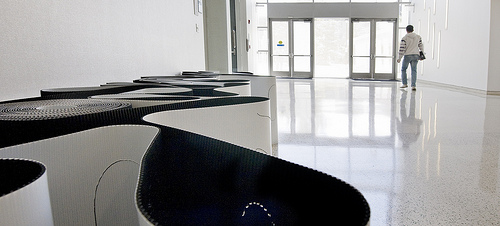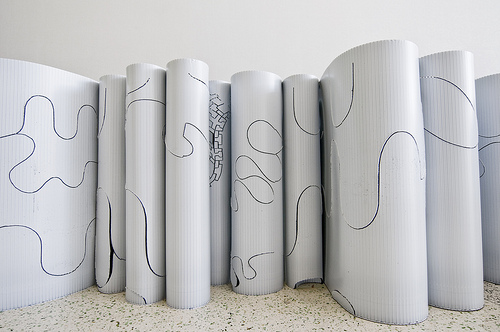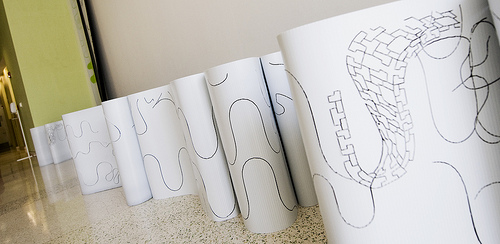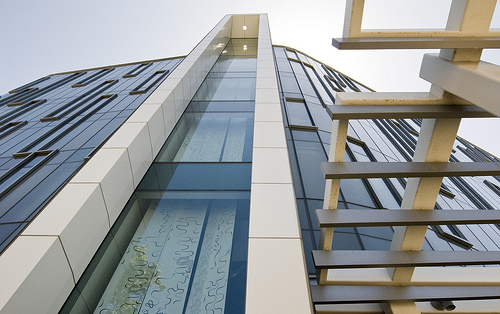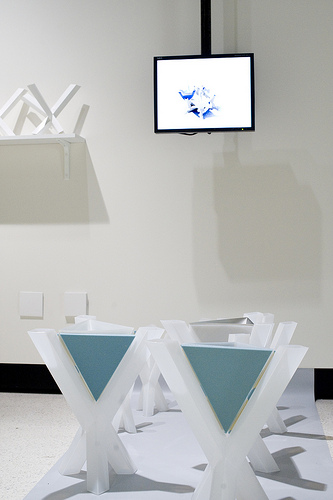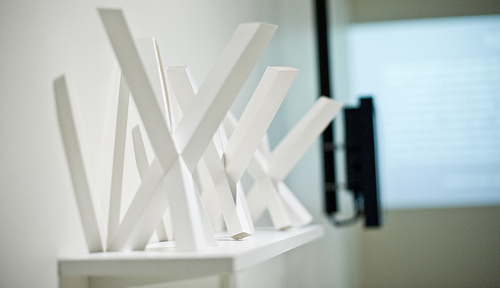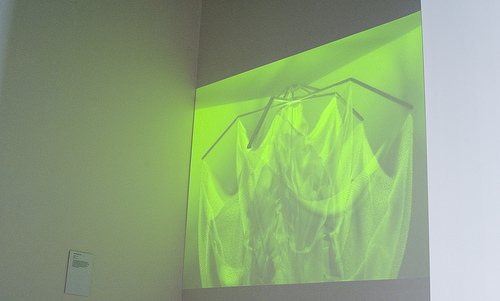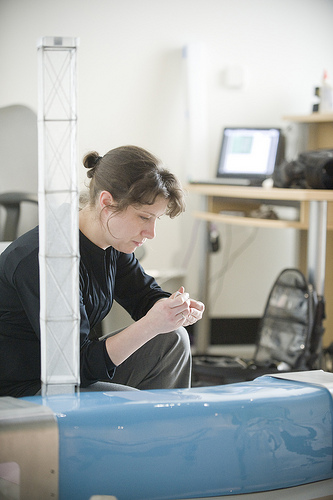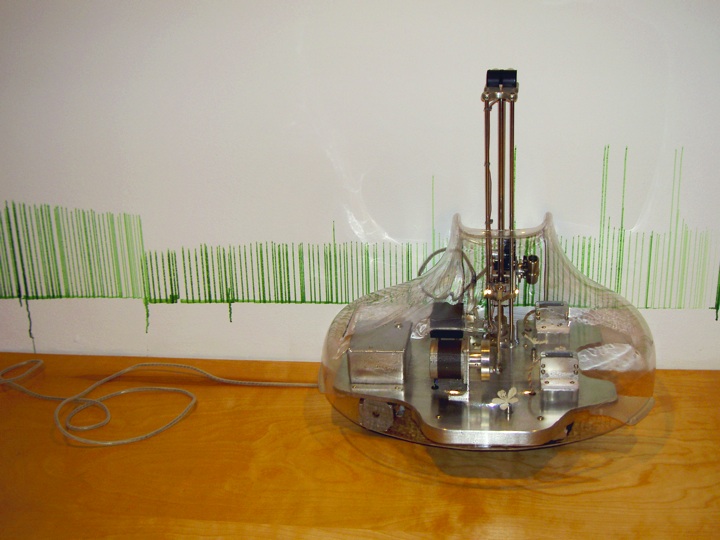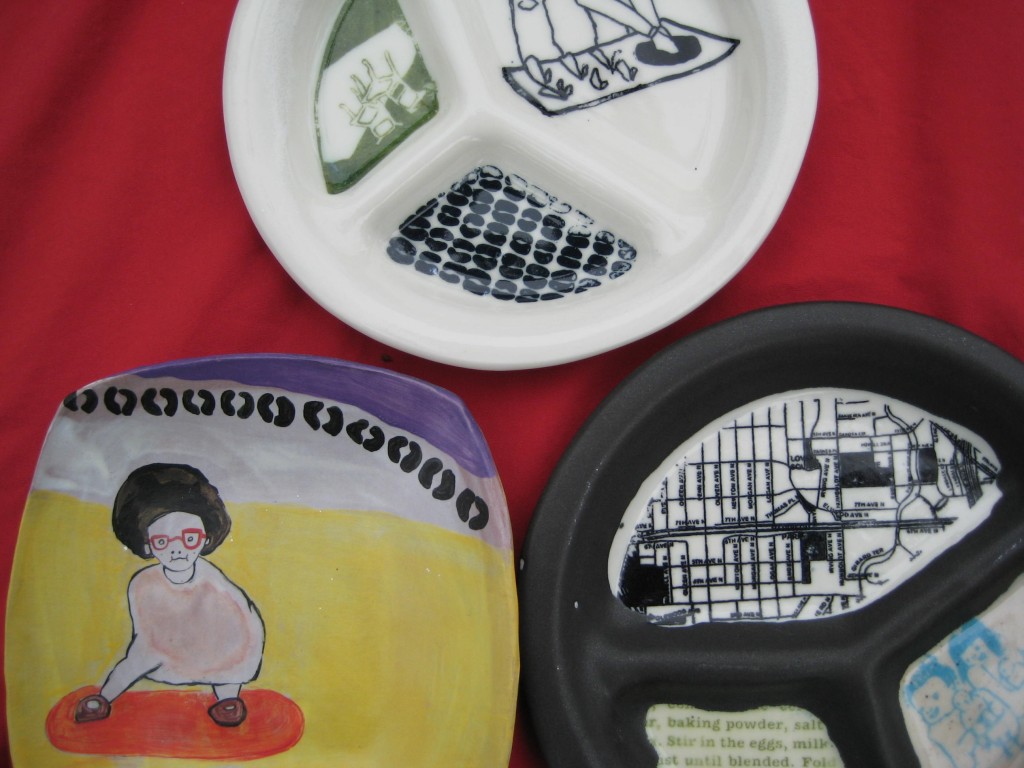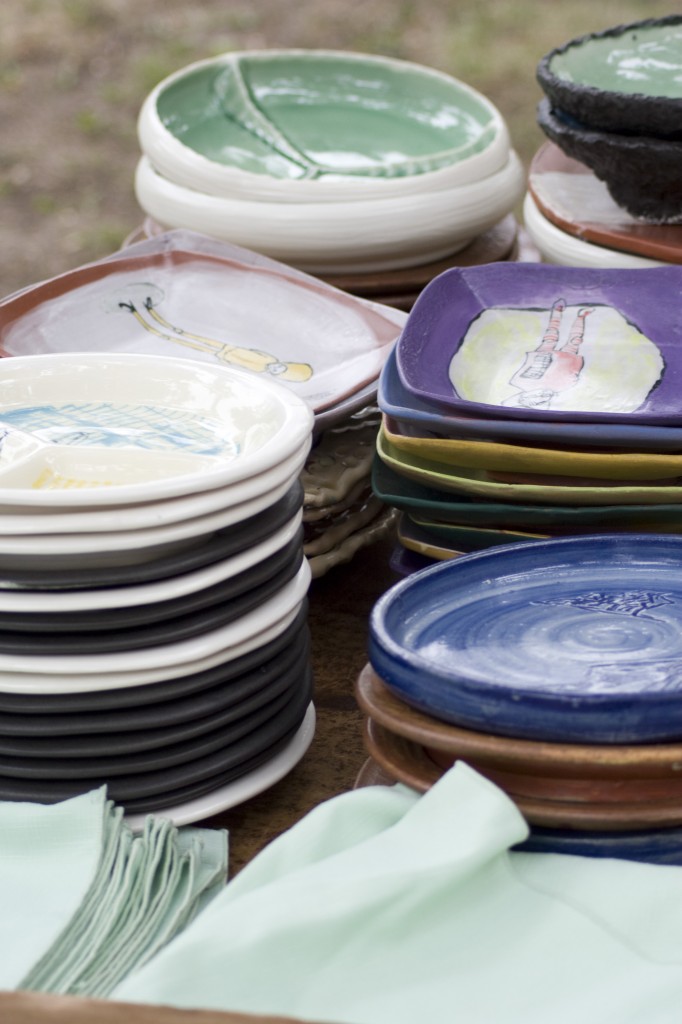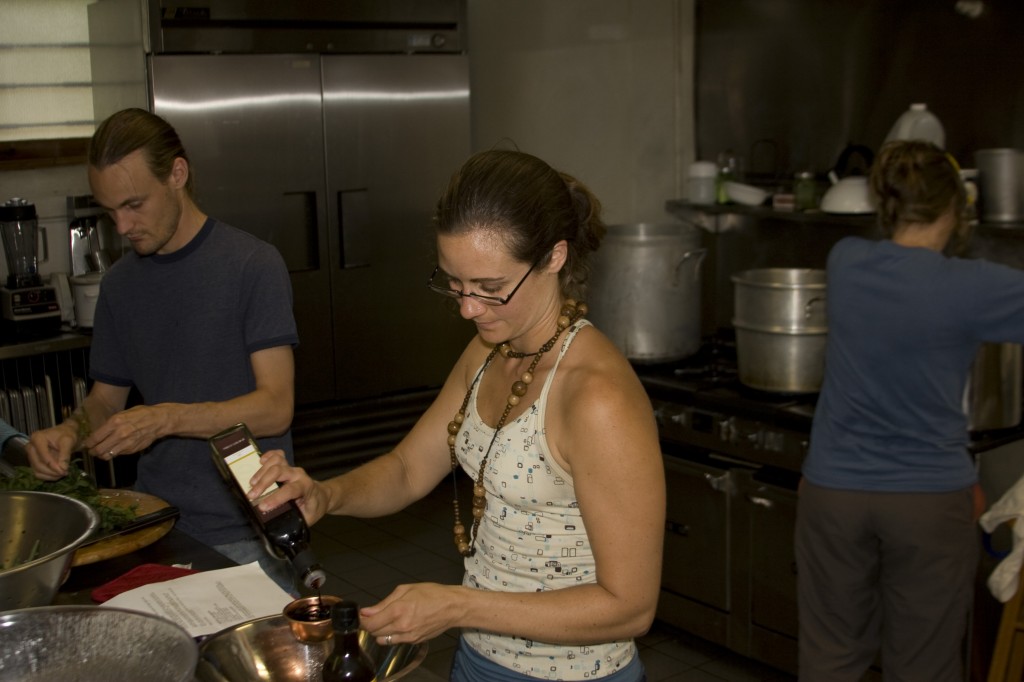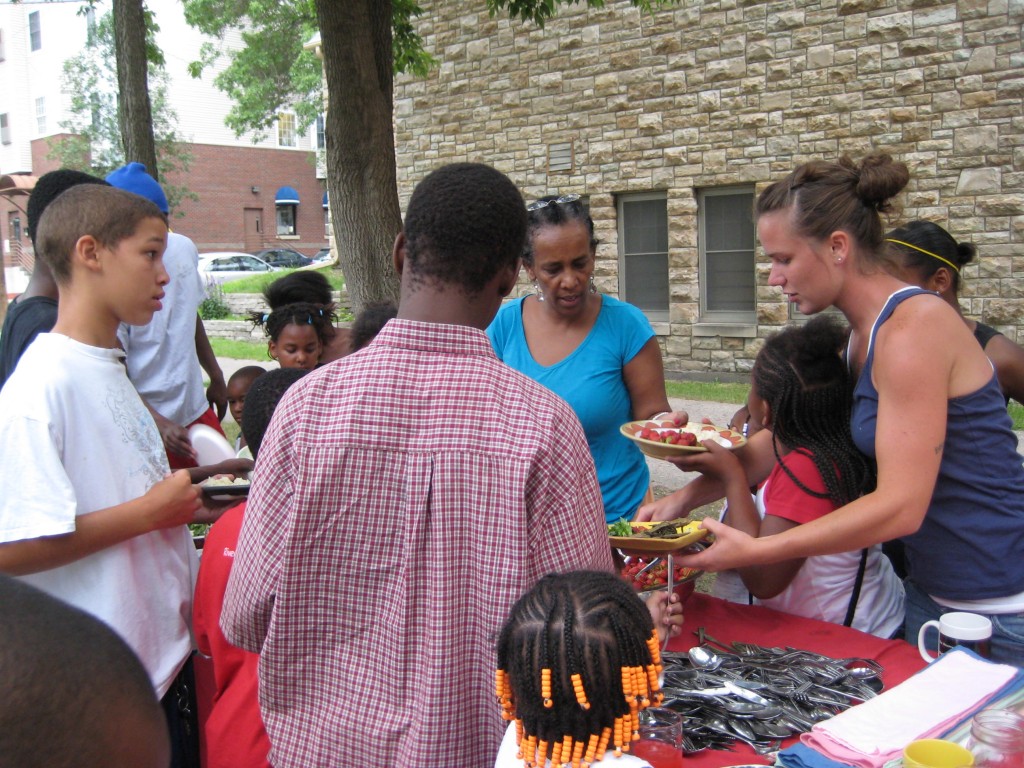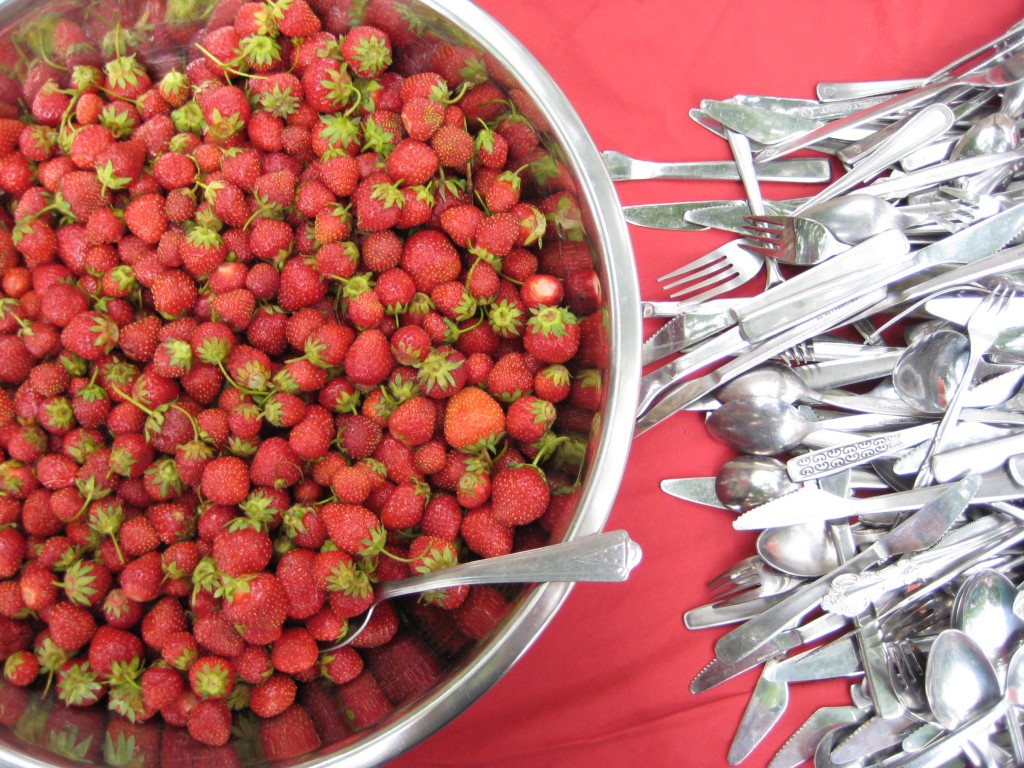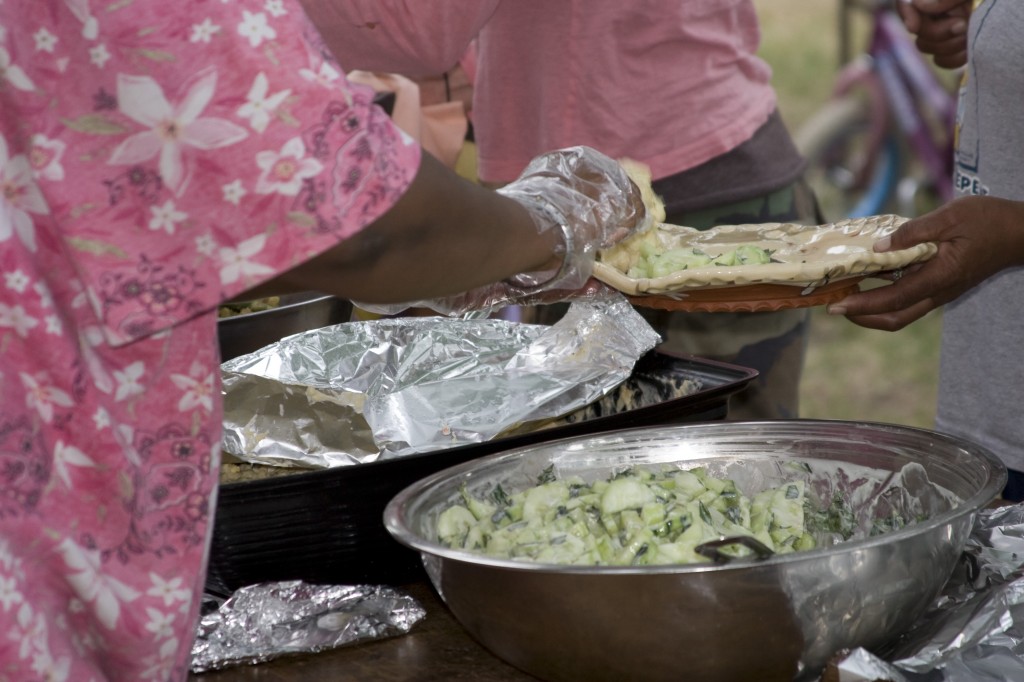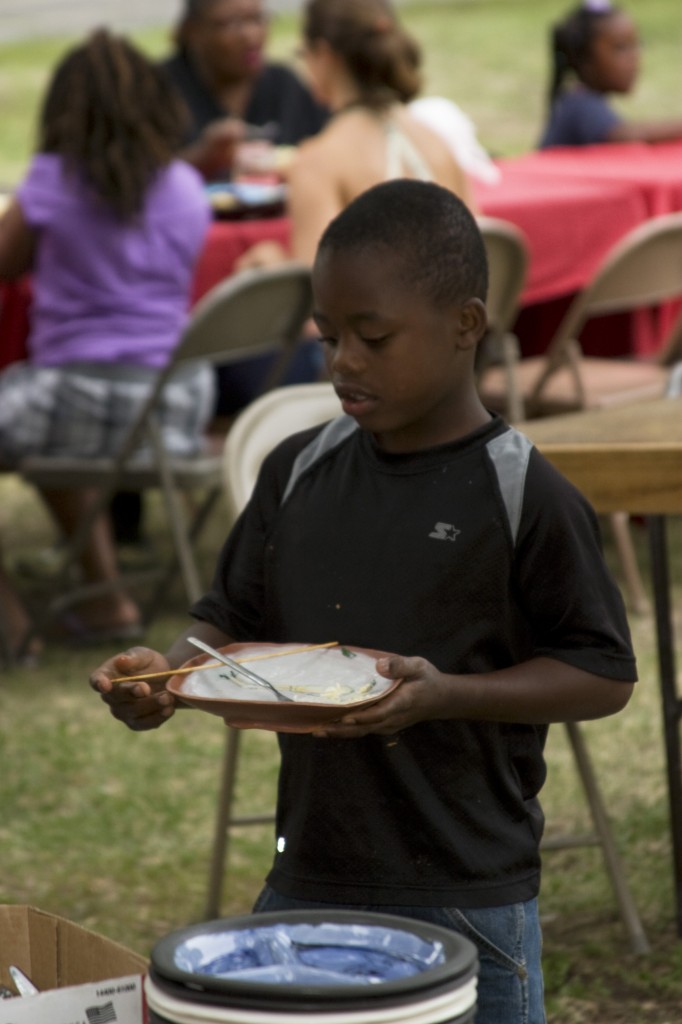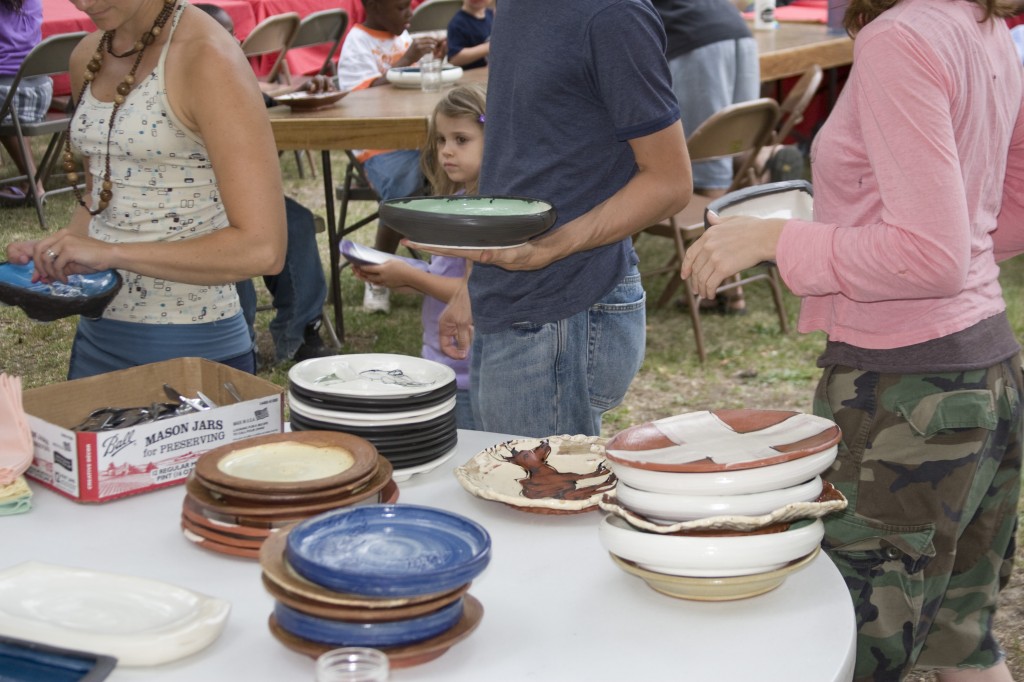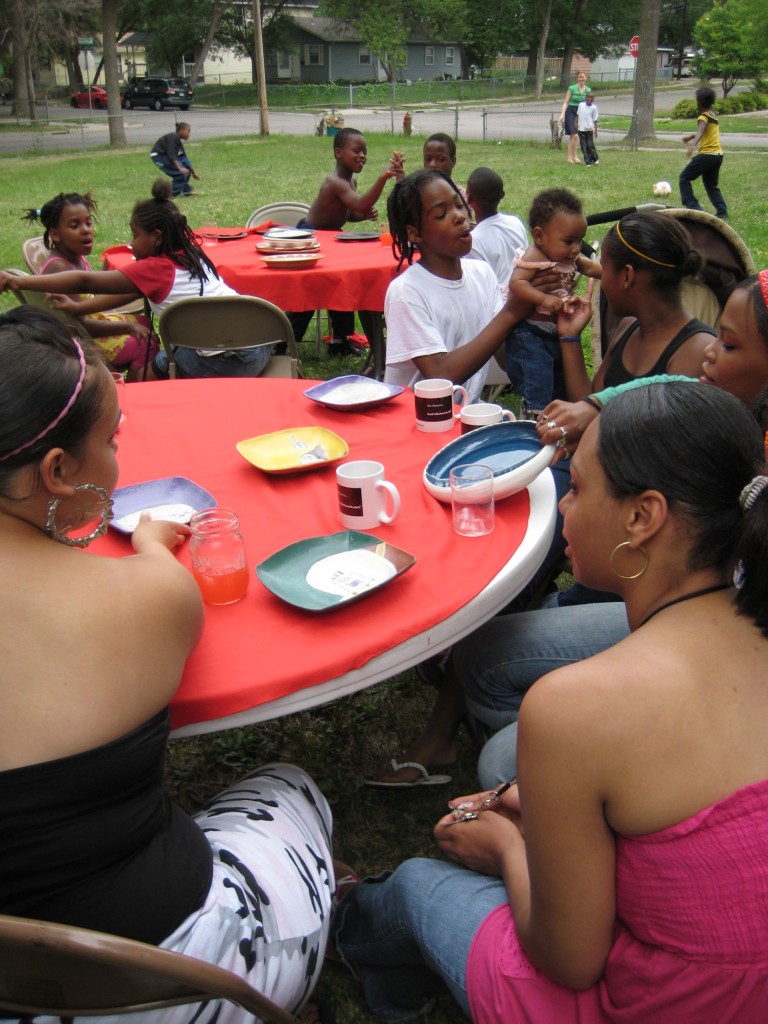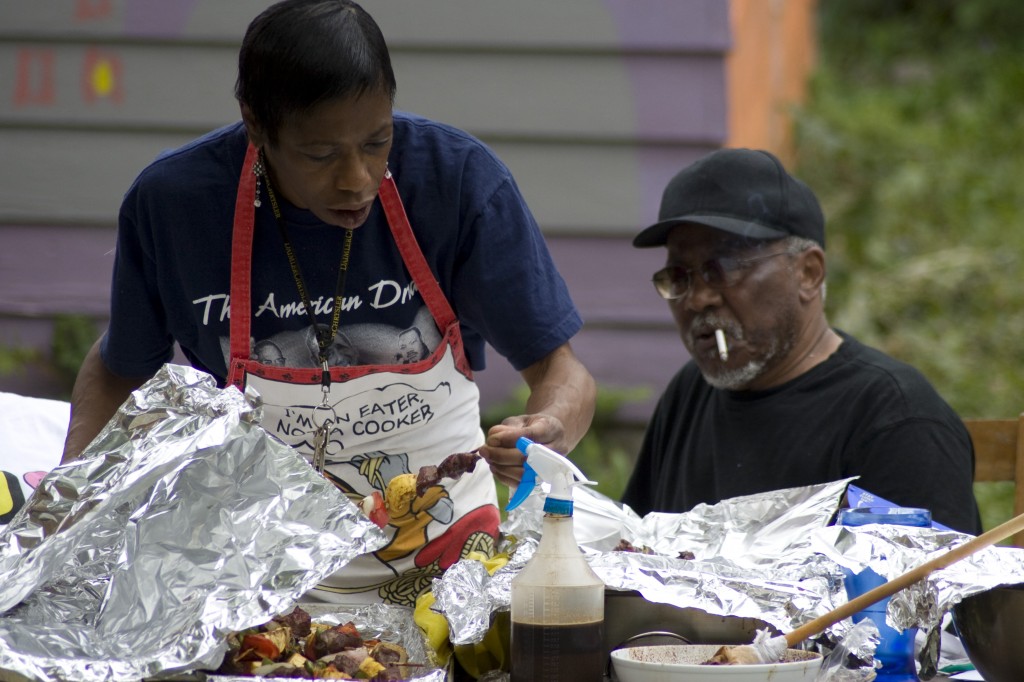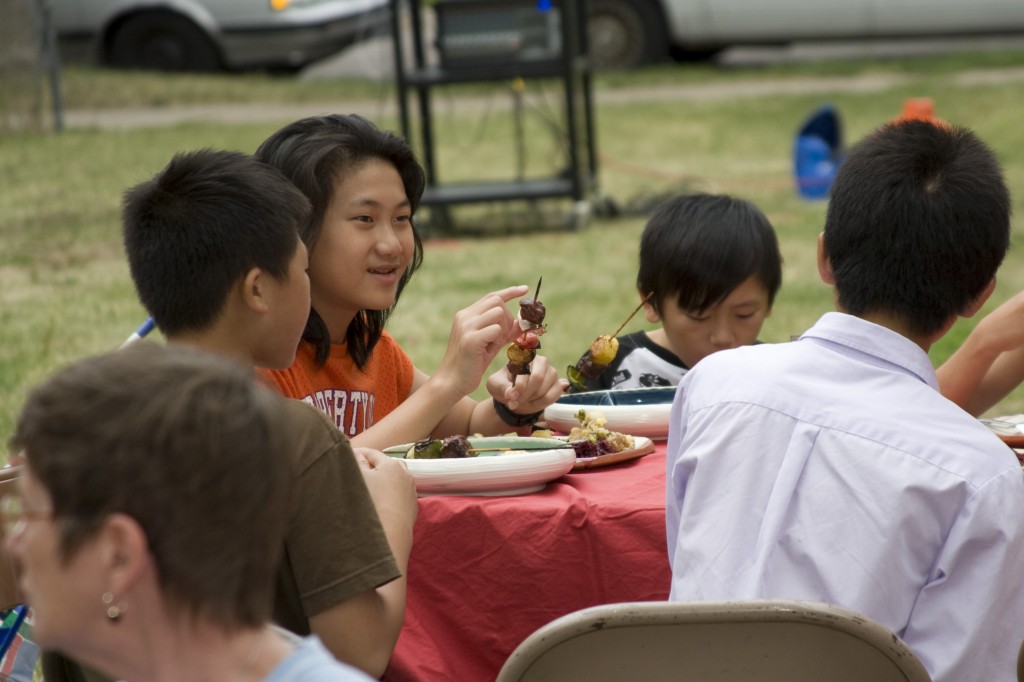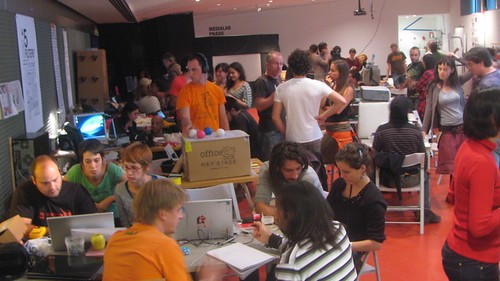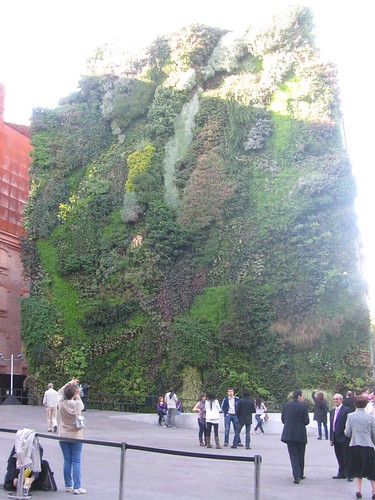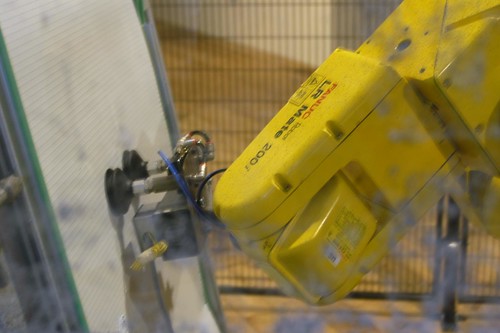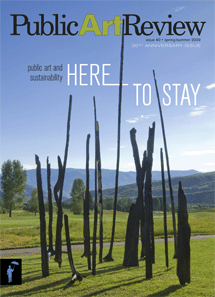TACTICAL ORGANIZING: The Instituent Art Practice of Public Matters
A group of guest writers have been invited to contribute to Public Address throughout 2011. Sue Bell Yank is a Los Angeles based writer and arts organizer. She is currently the Assistant Director of Academic Programs at the Hammer Museum in Los Angeles, and adjunct faculty in the Roski School of Fine Arts at the University of Southern California. Her writing has been featured in the Journal of Aesthetics and Protest, the Huffington Post, Mammut magazine, and various arts blogs including her ongoing essay blog entitled Social Practice: writings about the social in contemporary art (www.suebellyank.com).–JA
Teenaged, bespectacled Magali Bravo confronts the camera straight on as she and her small brother make their way to school through the streets of South Los Angeles. Weaving past the chain link of empty lots, nondescript motels and broad, shadeless expanses, the pair enters three corner markets in search of fresh produce. In crisp white polo shirts and khaki shorts (dress code of choice for LAUSD public schools), Magali and her brother move with a confidence that bespeaks their belonging to the neighborhood – but her face betrays disgust at the processed food choices available. Wrinkling her nose at the camera, the only fresh “produce” she finds are a few sad crates of withered potatoes and bruised bananas on the floor of one liquor store.
Magali’s video, entitled “You Can’t Put a Price on That,” is one of five videos produced through a collaboration between an interdisciplinary artist-run collective and consulting group called Public Matters, the South Los Angeles Healthy Eating Active Communities (HEAC) Initiative, and high school students at The Accelerated School.This youth media project dedicated to exposing the challenges of healthy food access in South L.A. was only one aspect of an integrated action plan that included developing a partnership with the local city council office, creating a “youth ambassador” program at The Accelerated School, bringing together various community organizations, businesses and advocates, and culminating in two Market Makeovers. One of these “makeovers” occurred at Coronado Meat Market, a corner market run by Magali’s godfather, and her video documents members of HEAC as well as her classmates moving displays, repainting, marking clear prices, and generally redecorating the store to highlight fresh produce and healthy food options [1]. Magali was clearly the impetus behind her godfather’s participation, and her energy is palpable, infusing her fellow teens and rendering the peppiness of the thirty-something HEAC project leaders somewhat redundant.
Video: You Can’t Put a Price on That,” Magali Bravo
Public Matters, LLC, a self-described “rag-tag group of consultants” [2], is the artist-run initiative behind the production of compelling videos like Magali’s, and the connective tissue linking constituents in many-tendriled collaborations like the South L.A. Market Makeovers (2007-2009). Their goal, simply stated, is to “work with community members to create media about their neighborhoods…to develop in them a sense of ownership over these places and a belief that they can directly shape their neighborhoods’ future. The media content reflects and benefits the community that has helped create it, advancing a specific community defined agenda or initiative.[3]” Though the precise role of Public Matters shifts over time and within projects, their tendency to involve themselves in social issues of great magnitude (such as tackling South and East L.A. food deserts [4] to provide increased access to healthy food and education about nutrition) necessitates a mode of working that includes multiple partners. For Public Matters, the size and scope of these partnering institutions often matches the enormity of the problems they take on – the group has gone from working with the community organization HEAC to a research center at UCLA Center for Research in Engineering, Media and Performance, or REMAP), to a major inter-university research institute called the UCLA-USC Center for Population Health and Health Disparities. Along with huge university bureaucracies also come massive funding opportunities, and additional state and federal governmental entities to answer to – for example, the current round of East L.A. market makeovers is funded by a 5-year grant from the National Institutes of Health.
Their lack of interest in one-offs and commitment to durational, sustainable projects that bring social benefit places Public Matters in an undefined, hybrid, interdisciplinary realm with many other artist-run initiatives that lack a traditional relationship to object-making and the commercial art market. By their university partners, Public Matters are perceived not as an artist collective, but primarily as on-the-ground liaisons with the most direct contact with schools and community organizations. They bring a way of engaging stakeholders through participatory media production that differs dramatically from traditional methods of public health messaging. From within their own organization, the boundaries between art, public health, social benefit are fluid, and become labels of convenience for different situations. Creative director Reanne Estrada maintains a separate studio practice, but sees herself engaged in a “continual practice of creative, collaborative problem-solving” in which her solo practice would suffer without Public Matters, and vice versa [5]. Mike Blockstein, principal and founder of Public Matters, very much considers the collective his art practice, and the various other consultants have diverse relationships to what they do as part of Public Matters. In his treatise on art and politics entitled Dark Matter, artist Gregory Sholette sums up this ambivalence towards definition when writing about similarly fluid practices: “I allow those who claim to make ‘art’ define it on their own terms, even if their identification with the practice is provisional, ironic, or tactical, as for example when art Steve Kurtz (with Critical Art Ensemble) insists ‘I’ll call it whatever I have to in order to communicate with someone.'[6]”

Project 3 (a.k.a. the Market Makeovers crew). Front row (left to right): Brent Langellier, Mike Blockstein, Reanne Estrada, Debra Glik, Alex Ortega, Heather Hammer, Rosa-Elena Garcia, Jeremiah Garza; Back row: Ron Brookmeyer, Nathan Cheng, Mike Prelip. Courtesy Public Matters, LLC

The UCLA-USC Center for Population Health + Health Disparities Team with Scientific Advisory Board + Community Advisory Board members. Courtesy Public Matters, LLC.
The interdisciplinary, shifting, and hybrid nature of Public Matters by no means implicates a lack of definition in purpose or goal. Rather, their organizational structure is tactical and deliberate, designed to maintain a nimbleness and flexibility supple enough to react effectively to a highly charged and overwhelmingly huge social issue. Perhaps for this reason, Public Matters has chosen to incorporate as an LLC rather than a non-profit – both Blockstein and Estrada worked extensively in the non-profit sector and understood the hierarchical professionalization necessary for such tax-exempt status. They were interested in forging “a new way of doing things as a social enterprise,” becoming essentially a for-profit entity but without any interest in generating profit – rather as a tactical method through which to form useful partnerships yet maintain elasticity in complex public situations [7]. By no means are they alone in this tactical organizing – Gregory Sholette explains that artists today are expert at imitating “a product particular to the post-industrial economy of our time” – the institution – which bespeaks a skill-set “that provides an edge when dealing with the society of risk beyond the longstanding adaptation to structural precariousness.[8]” In the case of Public Matters, this aptitude can be extrapolated beyond the precarity of artists’ positions as cultural producers and applied to the broader situations in which they insert themselves. In response to the “failed states” and “derelict institutions” that perpetuate problems as large as food deserts in the middle of enormous urban centers, artists “take up pieces of a broken world, transforming them into an improved, second-order social reality…[9]”
This oppositional motivation is perhaps too strong in the case of Public Matters, which is an extremely positive, collaborative, and optimistic organization. Yet the specific propensities which run through artist-initiated organizations like this that Sholette identifies, like “a propensity for flexible work patterns, developing gift-sharing networks, and a capacity for non-linear problem solving” allows artists to uniquely “mimic, exaggerate, or otherwise reshape given reality.[10]” Yet the ability of Public Matters to take on, maintain, and implement innovative projects alongside enormous university partnerships over long periods of time cannot be attributed to a flexible structure alone – in fact, issues of capacity and staffing plagues their ambition, and the work can be all-consuming. Rather, the success of the Public Matters model is related to a distinction between artistic and organizational practices that Irit Rogoff discusses in her article “Turning,” quoting a series of essays by philosopher Gerald Raunig. These essays mark a deep difference between “constituent” practice, in which an organization or collective exists to produce a series of protocols for both the representation and governance of their work (either in opposition to an existing market, or in spite of it). The problem that Rogoff identifies with constituent practice is that it is too easily pre-occupied with the processes through which an assembly is legitimated, and thus sabotages its own innovation and flexibility, opting instead for a regulatory ossification [11]. Rather, Raunig reveals practices like Park Fiction in Hamburg (and I would add Public Matters), as “instituent” practices. These organizations create “instituting events” that bring together a diversity of constituent practices (as in community organizations, schools, governmental entities, universities, individuals), and this plurality counter the closure of the processes at work. As Raunig describes, “The various arrangements of self-organization promote broad participation in instituting, because they newly compose themselves as a constituent power again and again, always tying into new local and global struggles.[12]”
This replicative capacity, the ability to re-invent themselves through a shifting diversity of strategies and networks, is why Public Matters can take on the kinds of projects they do with such limited capacity, and why they can navigate that fine line between “indulging the need to push boundaries and take risks, and being responsible to what we are charged with.” According to Reanne Estrada, this becomes the most integral part of the work, its most interesting and challenging aspect [13]. Public Matters faces a new aspect of this challenge in working with the USC Center for Population Health and Health Disparities on their current round of East Los Angeles market makeovers. The Center is charged with researching and evaluating the work on a large scale with enough rigor and integrity to someday impact policy, and this kind of research agenda and resources were never before available to an organization like Public Matters (nor similarly scaled artist-run initiatives). The research context poses both an exciting possibility for affecting change and rigorously assessing impact, but also becomes an enormous challenge to the flexible, non-linear work patterns and instituent events that defines Public Matters as an organization. They are learning now to work around concerns about data contamination, defining control and intervention areas, and other such problematics from the research perspective. Yet perhaps it is their very nimbleness and the “license to explore” that they grant to themselves and all of their participants that will allow them to adapt to this new reality as well.
[1] “Where do I get my 5?” Public Matters, LLC, http://www.publicmattersgroup.com/?page_id=721.
[2] Reanne Estrada, interview with author, June 6, 2011.
[3] “What is Public Matters?” Public Matters, LLC, http://www.publicmattersgroup.com/?page_id=2
[4] Food deserts are manifested by a scarcity of mainstream grocery stores, and where they do exist, they have poor quality produce and high prices. The South Los Angeles food desert is one of the largest in the country, spanning 60 square miles and encompassing 800,000 people. “South Los Angeles,” Public Matters, LLC, http://www.publicmattersgroup.com/?page_id=719
[5] Reanne Estrada, interview with the author, June 6, 2011.
[6] Gregory Sholette, Dark Matter: Art and Politics in the Age of Enterprise Culture (New York: Pluto Press, 2011), 5
[7] Reanne Estrada, interview with the author, June 6, 2011.
[8] Sholette, Dark Matter, 152.
[9] Sholette, Dark Matter, 153.
[10] Sholette, Dark Matter, 152-153.
[11] Irit Rogoff, “Turning,” in Curating and the Pedagogical Turn, eds. Paul O’Neill and Mick Wilson (Amsterdam and London: De Appel and Open Editions, 2009), 44.
[12] Rogoff, “Turning,” 45.
[13] Reanne Estrada, interview with author, June 6, 2011
ReGeneration deadline extended to May 16
The deadline for submissions to ReGeneration has been extended to May 16.
Proposals for ReGeneration can be for gallery installations or public projects on the grounds of NYSCI or in surrounding areas for the duration of the exhibition or for one-week modules exploring a particular concept or idea. Six of the projects will be juried based on this open call, three for installations and three for workshop modules. Collaborations are encouraged but should be confirmed with a letter of support in the application. More information here.
Soil Kitchen

Soil Kitchen is a planned temporary public art project by Futurefarmers addressing issues of sustainability specific to the urban environment.
Futurefarmers is one of my favorite artist groups, and I have had the privilege of working with them on a number of projects (Free Soil Bus Tour, Sunshine Still/Speak Hard, A People Without a Voice Cannot Be Heard), so I was excited to see notice of this new project in Philadelphia, Soil Kitchen. The press release from the Office of Arts, Culture, and the Creative Economy describes the project –
“[Soil Kitchen] will incorporate community involvement, naturally generated energy, local foods, food exchange, the creative reuse of a brownfield site, and brownfield mapping. This new site-specific public artwork will provide a stage for interaction, dialogue, and education on topics of sustainability that impact every Philadelphian.”
It’s a tall order for a kitchen, but the project builds on a related history of Futurefarmers’ work that bodes well for its success. Victory Gardens – “A local network of home gardens = A community of food producers!” – was an exemplary community involvement project, which sought to at least reference if not recreate the remarkable “community” success of World War II victory gardens. It was also the occasion for the creation of the photogenic Garden Trike, which you can see referenced in the sketch above. Rainwater Harvester/Greywater Feedback Loop was a DIY system not unrelated to the rooftop windmill for naturally generated energy (presumably).
The exterior sketch of Soil Kitchen reminds me of a place like Waffle Shop in Pittsburgh, where a normative architectural facade of a restaurant belies an interior experiment in creative sociability. Inside Soil Kitchen, it’s not just dour tree huggers expounding on the chemical propertiesof this and that agent. It’s a party! For Futurefarmers’ Sunshine Still/Speak Hard project as part of Out of the Garage Into the World, they appropriated the idea of the glamorous prohibition era speakeasy but made it a “speak hard,” where hard truths – or at least assertions in an ongoing debate between solar and bio fuel energy proponents – were debated in forums well lubricated by their sunshine still.
Abiding commitment, expert knowledge/knowledge of experts, social conviviality, a formally beautiful DIY aesthetic, and an uplifting playfulness distinguish Futurefarmers’ projects. I can’t wait to taste test in the Soil Kitchen.
Sidebar rant
Kudos to Philadelphia’s Office of Arts, Culture and the Creative Economy for commissioning this project, but I can’t help but think that their press release headline “Philadelphia’s Office of Arts, Culture and the Creative Economy Commissions FUTUREFARMERS for the City’s First-Ever Temporary Public Art Project” identifies just about the least interesting and unimportant aspect of the project. What’s up with that? We produced similarly unimaginative headlines for the 01SJ Biennial, and I also plead guilty as charged. The press is fascinated, of course, by “first,” “most,” “biggest,” and various other ests, but we cater to them in our short term desire for coverage at the peril of lack of understanding and ultimately support over the long term.
Sabrina Raaf, A Light Green Light
Designing our way out of this
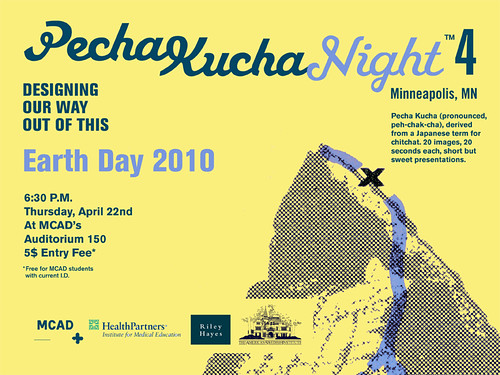
AOV2 Fellow Arlene Birt will be presenting her latest design/art work on communicating back-stories at this event on Thursday.
See you there.
Sabrina Raaf, A Light Green Light
UC SAN DIEGO NEWS RELEASE
March 5, 2010
Media Contact: Doug Ramsey, 858-822-5825, dramsey@ucsd.edu
Gallery Coordinator: Trish Stone, 858-336-6456, tstone@ucsd.edu
Sustainability and Art on Display at UC San Diego’s gallery@calit2
The University of California, San Diego has built a reputation for being one of the “greenest” campuses in the nation, and that reputation extends to an art gallery in the university’s California Institute for Telecommunications and Information Technology (Calit2), which is staging a new sustainability-themed art exhibition.
The gallery@calit2 goes green this spring with an exhibition by Chicago-based artist Sabrina Raaf, whose custom-built robotic sculptures and site specific installations include a series of experiments that address issues of sustainable practice, the construction of social spaces, and prototyping for modular green architecture. Curated by Steve Dietz, “A Light Green Light: Toward Sustainability in Practice” opens Friday, April 2, 2010, with a 6 p.m. panel discussion moderated by UC San Diego visual arts professor Jordan Crandall, followed by a reception.
Dietz has selected five of Raaf’s electronic and responsive artworks to be included in this exhibition: Translator II: Grower, Icelandic Rift, Light Green Light, (n)Fold, and Meandering River.
Translator II Grower, a robotic sculpture, measures carbon dioxide levels inside the gallery as they are generated by visitors, and actively draws the measurements in green ink as a field of grass on the gallery walls. Examples of these ink drawings will be on display on the first floor of Atkinson Hall.
The Icelandic Rift sculptures are electronically-powered works that include mechanical systems, representing far-future visions of agricultural production and mineral mining in zero-g environments.
Prototypes and concept animations for Light Green Light, a lamp that unfolds into a netted tent for sleeping, and (n)Fold, a flat-fold design for dew harvesting and passive solar cooking, are also on view in the gallery.
Meandering River is a sculptural installation made up of thermal screen material that has had its surface milled robotically with meandering river designs. Its installation form is derived from self-organizing and meandering river mathematics. This thermal screen installation is also designed to cascade vertically in order to create a climbing surface for vines and thus support the growth of a vertical garden. A cascading instance of the Meandering River sculpture is hung in the six-story window of the Atkinson Hall stairwell, and a second, river-type instance will be viewed in the hall area on the first floor.
Raaf works in experimental sculptural media and designs responsive environments and social spaces. Her work has been presented in solo and group exhibitions at the Brandts Art Center (Denmark), Transitio_MX (Mexico City), Sala Parpallo (Spain), MejanLabs (Stockholm), Lawimore Projects (Seattle), the Edith-Russ-Site for Media Art (Germany), Stefan Stux Gallery (NYC), Ars Electronica (Linz), Museum Tinguely (Basel), Espace Landowski (Paris), Artbots 2005 (Dublin), Kunsthaus Graz (Austria), ISEA (Helsinki), the San Jose Museum of Art, and Klein Art Works (Chicago). The artist is the recipient of a Creative Capital Grant in Emerging Fields (2002) and an Illinois Arts Council Fellowship (2005 &2001). Reviews of her work have appeared in Art in America, Contemporary, Chicago Tribune Sunday Magazine, Leonardo, Washington Post, and New Art Examiner. She received an MFA in Art and Technology from the School of the Art Institute of Chicago (1999) and is currently an Associate Professor in the School of Art and Design at the University of Illinois at Chicago.
Steve Dietz is Founder, President, and Artistic Director of Northern Lights.mn. He was the Founding Director of the 01SJ Biennial in 2006 and is currently Artistic Director of its producing organization, ZERO1: the Art and Technology Network. He is the former Curator of New Media at the Walker Art Center in Minneapolis, Minnesota, where he founded the New Media Initiatives department in 1996.
“A Light Green Light: Toward Sustainability in Practice”
by Sabrina Raaf
Curated by Steve Dietz
Friday, April 2, 2010 – Friday, June 4, 2010
Friday, April 2, 6 p.m. in Calit2 Theater, Atkinson Hall, UCSD
Panel Discussion with Sabrina Raaf and Steve Dietz
Moderated by Jordan Crandall, Associate Professor, Visual Arts, UCSD
Welcome by Ramesh Rao, Director, UCSD Division, Calit2
Friday, April 2, 7 p.m. in gallery@calit2, Atkinson Hall, UCSD
Opening Reception
Events are FREE and open to the public.
RSVP requested to Trish Stone, Gallery Coordinator, at tstone@ucsd.edu
http://gallery.calit2.net
Subtle Technologies
CALL FOR SUBMISSIONS
13th Annual Subtle Technologies Festival -Â Call for Submissions
Deadline January 9 2010
Festival Dates: June 3 – 6 2010
Submission via website by January 9 2010
For this year’s Subtle Technologies Festival, we wish to explore sustainability through a critical multidisciplinary lens. We invite investigations of the role that decentralization, diversity and societal power dynamics plays in our attempts at maintaining a sustainable future. Where does the death of languages, cultures and peoples fit into the sustainability discussion? We look forward to critical discussions that explore multiple meanings of sustainability in this state of ecological and global health. We will be discussing the science and technology behind sustainable practices and design as well as the science behind some of the events and circumstances that have driven us to seek sustainable solutions. What role does the artist play in bringing forth new layers of understandings in this discussion?
Thursday Nights Out in North Minneapolis
Yesterday, I had to the opportunity to drop in on Medialab-Prado, the innovative organization in Madrid behind Interactivos?, among many other outstanding programs, which the 01SJ Biennial will collaborate with in September. The Medialab was in the midst of a two-weekend workshop program, HelloWorld!: Contemporary stage creation and new technologies, and the energy in the room when I walked in was contagious. This kind of open lab program is a hallmark of Medialab-Prado’s programming, and the 60 or so people packed in for a series of evening performances and talks only highlighted their community-based strength. One thing I was suprised to see was a new 40,000 pixel LED screen at Medialab-Prado. New urban screen, Medialab-Prado The screen is not yet functional, and you can see that it is in a very close-quarters situation. It will be interesting to see how Medialab-Prado uses this new “venue” with its commitment to open platforms and process. Medialab-Prado is on a quiet street between the Prado and Reina Sofia museums, around the corner from a new and quite beautiful Caixa Forum center, which includes a different kind of urban screen, what zelen.bg, the “portal site for gardening in Bulgaria,” calls the “last vertical garden of Patrick Blanc.” It’s stunning and forms a fascinating bookend with the new Medialab-Prado screen. Sabrina Raaf, "Translator II: Grower, 2004-06" curated by Eduardo Navas for Transitio_MX. "It consists of an interactive robot that responds to the level of carbon dioxide in the room. Quite a popular piece in the exhibit; some visitors, upon learning about the work, exhale in front of the sensor to make the lines as long as possible." via Remix Theory Check out more work from the 3rd biennial Transitio_MX. I will be curating a show of Sabrina Raaf’s work, Experiments in Sustainability, at the Gallery @ CALIT2, including Translator II: Grower as well as some new work she produced this fall during a residency in Denmark working with industrial robot manufacturer Gibotech A/S, based in Odense to create an installation, where one of Gibotech’s robots is reprogrammed to cut corrugated plastic in large patterns. Over time, the patterns will transform into a sculptural installation spilling out on the floor or the exhibition space, evolving through the exhibition period. via e-flux The Bridge Homeless Assistance Center with public art by Gordon Huether receives an American Institute Of Architects (AIA) 2009 Housing Award. The Bridge Homeless Assistance Center in Dallas, Texas was developed from a reclaimed industrial warehouse opened in May 2008. It is a multi-purpose facility dedicated to serving homeless men, women and children, with a primary focus on the chronically homeless. The artist worked with the homeless to create seven art glass windows incorporating brightly colored mouth-blown glass, etched and silk-screened with text from writings of the shelter’s clients. The text is superimposed over the glass panels. Schuykill Center for environmental education presents functional woodland shelters made from recycled and reused industrial materials as well as sustainable harvested bamboo. This is a really cool environmental exhibition for anyone interested in the environmental sustainable architecture or industrial design concepts. The projects presented were chosen from over 80 designs submitted by 65 teams from across the US and internationally. Check out the winning designs at http://www.schuykillcenter.org/gimmeshelter/
Panelists Christine Baeumler, Seitu Jones, Nicholas Legerous, and Ralph Nelson of Loom Studio shared their recent projects as well as views on the latest concerns and trends in sustainable public art practices (including the desire for a word to replace sustainable!). An inquisitive group of students from Vesper College and a hearty group of Twin Cities based public artists spurred the discussion along. Forecast collaborated with NEMAA, Vesper College, and The Institute for Advanced Study at the University of Minnesota to host the evening to celebrate and promote the newest issue of Public Art Review which focuses on the same theme. As is always the case with good dialog many more questions were raised than answers given. Forecast collected written questions from the audience and encourages you to continue the discussion online. Feel free to add your thoughts to the questions posed below! Or just read them as food for thought. Does the future of sustainable art making lie in the manipulation of living organisms as a medium – moving away from the static? How can (public) art inspire “mainstream” America to act?- Brad Baso What change needs to occur within (public) art as a practice in order to be even more sustainable? What is holding the field back? – Brad Baso Where can one learn more about reusing water on one’s own property? Do you know of any city funded programs to encourage property owners to set up these types of projects? (related to a discussion on watershed art projects). What are the negative & positive effects of the current economic downturn on sustainable public art & artists? – Laurie Phillips Sustainability demands scientific, technical knowledge of creative professionals. Will “Sustainability” in art eventually lead us to merge the studio with the laboratory (or field studies) in a seamless synthesis? Where might this lead? Nick differentiated between his world before and after being involved in a community. Could everyone comment on their experience working as part of a greater community? – Susannah Please speak a bit more to how initiatives, community collaborations, and community history can become a part of sustainability. How can public art be utilized better, especially concerning business as usual? Do you think art can help to change people value systems and help to work for social change? How do beauty and emotion (of the work and process) help to build community and a better world? When you envision a project that cuts across disciplines and public entities, is it best to approach them separately or together? What skills, experiences, and insights do aritsts contribute to the sustainability community of scientists, government business, etc? Why should they be at the table? – Brad Baso Does public art create change within or in spite of the system? – Brad Baso What is being sustained in sustainability? – Jon Spayde “Sustainability” – overused indeed, so what buzz word should we start using instead? How do you break into public art “creating sense of place” when pigeon-holed by commercial sense of place? How do you get started in public art if your background is in commercial art but your heart is public?
Different urban screens
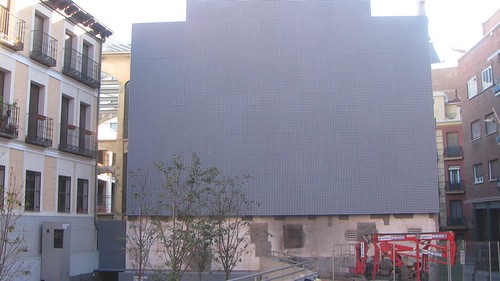
Transitio_MX
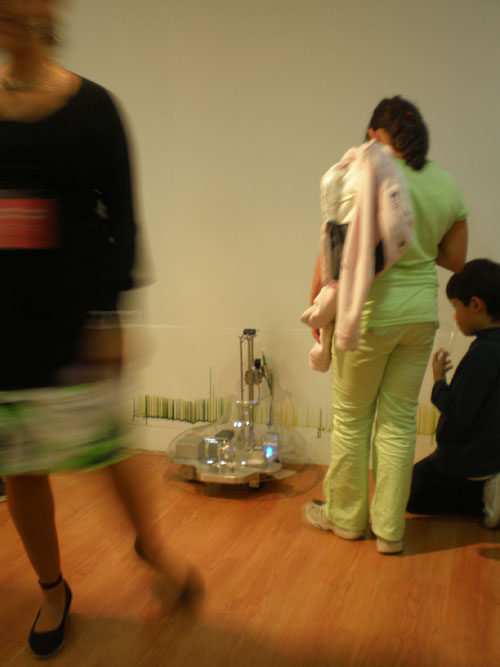
American Institute Of Architects 2009 Housing Award
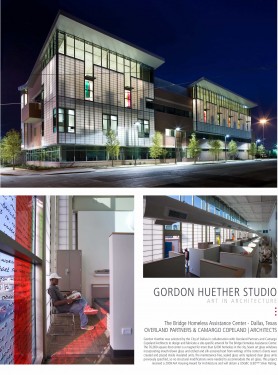
Gimme Shelter
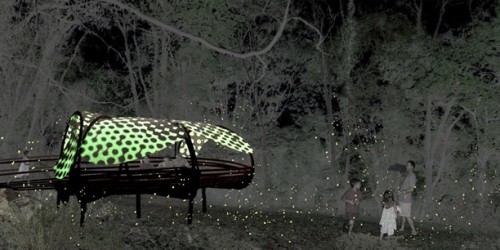
Buckminster Fuller and Olafur Eliasson Exhibition
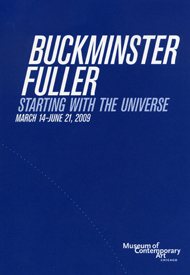 Recently I had the good fortune to see the Buckminster Fuller exhibit while visiting Chicago. He was one of the first interdisciplinary thinkers and an early advocate of alternative energy. This is an excellent exhibit for those who want to be inspired by a true visionary. He was an architect, engineer, environmental scientist, mathematician, philosopher and visual artist. One can explore his quest to discover what one person can do to serve the needs of his fellow human beings. Olafur Eliasson’s work is concurrently showing until September 13, 2009.The Buckminster Fuller exhibit is showing at the Contemporary Museum of Art in Chicago, extended until July 5, 2009.
Recently I had the good fortune to see the Buckminster Fuller exhibit while visiting Chicago. He was one of the first interdisciplinary thinkers and an early advocate of alternative energy. This is an excellent exhibit for those who want to be inspired by a true visionary. He was an architect, engineer, environmental scientist, mathematician, philosopher and visual artist. One can explore his quest to discover what one person can do to serve the needs of his fellow human beings. Olafur Eliasson’s work is concurrently showing until September 13, 2009.The Buckminster Fuller exhibit is showing at the Contemporary Museum of Art in Chicago, extended until July 5, 2009.
Food for Thought: Continuing the Discussion on “Creating A Sustainable Public Art Practice”







![Ben Garthus talking to NYSCI "Explainers" about Biomodd [NYC4] Ben Garthus talking to NYSCI "Explainers" about Biomodd [NYC4]](https://northern.lights.mn/wp-content/uploads/2012/10/IMG_5352-1024x768.jpg)












![Biomodd [NYC4] Biomodd [NYC4]](https://northern.lights.mn/wp-content/uploads/2012/10/IMG_5326-1024x768.jpg)
![Biomodd [NYC4] Biomodd [NYC4]](https://northern.lights.mn/wp-content/uploads/2012/10/IMG_5327-768x1024.jpg)












